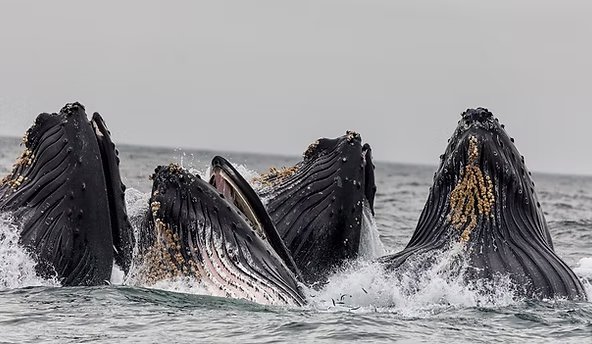North Atlantic Right Whales Experience Mini-Baby Boom
One of the rarest whale species in the world is experiencing a mini-baby boom off the coast of New England, lending hope to the survival of this once-imperiled population.
Population Status
With just over 400 known individuals left, the North Atlantic right whale was nearly driven to extinction by commercial whalers by the early 1890s. The species was listed under the Endangered Species Act in 1970. Concerns were high last year after no new calves were reported, but the Center for Coastal Studies (CCS) aerial team has now spotted two mother-calf pairs in Cape Cod Bay, bringing the total number of new calves off Massachusetts this year to three.
Notable Mothers
One mother, EgNo4180, was first spotted in 2010, making her at least nine years old. She was recently seen with new entanglement wounds. The other mother, EgNo3317, born in late 2002, had last been seen with a calf in 2016. These sightings offer hope for the species’ recovery.
Habitat and Feeding
North Atlantic right whales give birth in the southern states of Georgia and Florida during winter, then travel north to New England to feed in early spring. These massive whales can weigh up to 70 tons and live up to 70 years. They are baleen feeders, surviving on tiny shrimp-like krill and small fish.
Major Threats
Today, threats include entanglement in fishing gear, vessel strikes, ocean noise, climate change, disturbance from whale-watching activities, and a lack of food. Collisions with ships are especially concerning, prompting NOAA to establish the North Atlantic Right Whale Sighting Advisory System (RWSAS). Vessels 65 feet or longer must follow a speed restriction of 10 knots within designated high-risk areas along the U.S. Atlantic seaboard. Approaching within 1,500 feet without a federal research permit is illegal.
Observation Opportunities
Right whales often feed very close to shore, offering whale watchers on land exceptional views of one of the rarest marine mammals, according to CCS.
Global Context
There are three species of right whales worldwide. Only the North Pacific right whale is rarer, with likely fewer than 200 individuals remaining.

